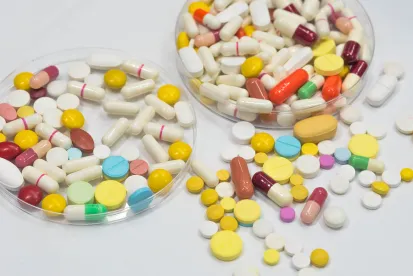This is Part 3 in my series exploring the history of FDA’s regulation of off-label communications, which has become newly relevant in light of the recent events highlighted in Part 1. In this installment, I continue describing how FDA’s regulatory scheme has persisted in light of the key First Amendment decisions involving off-label promotion. Even though FDA hesitated in and ultimately rejected promulgating regulations that would make any action “that directly or indirectly suggests to the physician or to the patient that an approved drug may properly be used for unapproved uses for which it is neither labeled nor advertised” (37 Fed. Reg. 16,503, 16,504) into a matter warranting enforcement action, the Agency used this reasoning to shape an off-label communication policy. As I described in Part 2, FDA’s policy enjoyed some support from federal courts; however, this support was only temporary. More recently, federal courts have shown support for the idea that truthful and non-misleading promotions of off-label uses of drugs and devices by manufacturers are protected under the First Amendment. A review of the pivotal cases in this area will help put FDA’s off-label policy in perspective, especially in light of FDA’s reaction to these cases in a memorandum published in January 2017.
Washington Legal Foundation and Aftermath as the Backdrop for Caronia and Later Cases
In 1998, the U.S. District Court for the District of Columbia ruled that FDA’s guidance documents Industry-Supported Scientific and Educational Activities (62 Fed. Reg. 64,074 (1997)) and Advertising and Promotion (61 Fed. Reg. 52,800 (1996)) were unconstitutional because they unduly burdened manufacturers’ First Amendment right to provide physicians with truthful and nonmisleading information on off-label uses. With respect to the first element of the Central Hudson test (whether the commercial speech concerns a lawful activity and the speech is not misleading), a pivotal consideration in this case, FDA attempted to show that off-label communication itself is an illegal activity by arguing, in the words of the court, that “a drug or device is considered to be misbranded as a matter of law if it is promoted by the manufacturer for an off-label use . . . [and t]herefore, when a manufacturer disseminates information about a drug product that diverges from the treatments included on the label, that manufacturer may be engaged in misbranding, which is illegal” (Wash. Legal Found. v. Friedman). The court rejected that reasoning, stating that the underlying activity promoted by the off-label communication, as speech, is a physician prescribing drugs or devices off-label, which is legal. The court went on to find that off-label communications are protected commercial speech and that the Central Hudson test weighed in favor of protecting such communications against FDA’s regulatory overreach. This decision set the stage for FDA to strike the guidance documents and reconsider its off-label policy.
After the decision in Washington Legal Foundation, however, the Food and Drug Administration Modernization Act of 1997 (FDAMA) went into effect, which contained explicit provisions describing acceptable circumstances in which manufacturers could provide off-label information to health care professionals. The effect of FDAMA was the key consideration in the appeal of the district court’s ruling, Washington Legal Foundation v. Henney. By the D.C. Circuit Court of Appeal’s description, FDA appeared confused about its own policy after FDAMA: “At times the FDA appeared to share WLF’s assessment that [FDAMA] provide legal authorization to restrict manufacturer speech, but more frequently the FDA asserted that [FDAMA] established nothing more than a ‘safe harbor’ ensuring that certain forms of conduct would not be used against manufacturers in misbranding and ‘intended use’ enforcement actions based on pre-existing legislative authority” (202 F.3d 331 at 335). Ultimately, FDA chose to view FDAMA as providing a safe harbor, admitting “[w]ere a pharmaceutical company to send out reprints of an article devoted to its drug’s off-label uses to thousands of physicians tomorrow . . . the agency would draw no independent prosecutorial authority from FDAMA to buttress any enforcement proceeding” and “noting in [FDAMA] provides the FDA with independent authority to regulate manufacturer speech” (id. at 335-336). In light of those concessions, the Washington Legal Foundation dropped its claim and the D.C. Circuit dismissed the case.
Although there was no lasting, enforceable legal rebuke to FDA’s off-label policy from the Washington Legal Foundation cases, the analyses provided by the courts involved laid the foundation for subsequent courts to determine the First Amendment implications of off-label communication regulations.
The Next Era: Sorrell, Caronia, Amarin, and Vascular Solutions
The question of the whether promotion of drugs and devices by manufacturers is protected speech arose again in 2007 when Vermont passed a law essentially prohibiting manufacturer access to prescriber-identifying information, which was challenged in court. The case made its way to the U.S. Supreme Court as Sorrell v. IMS Health Inc. Importantly, the Court held that “[s]peech in aid of pharmaceutical marketing . . . is a form of expression protected by the Free Speech Clause of the First Amendment” and found that the state did not overcome its burden to show that the restriction leveled only at manufacturers advanced a substantial government interest, as required under Central Hudson.
Sorrell further paved the way for the subsequent decisions in U.S. v. Caronia, Amarin Pharma, Inc. v. FDA, and U.S. v. Vascular Solutions, Inc. It is not my intention to repeat all of the details and holdings in each of these cases here, as this blog has previously analyzed these three critical off-label communication cases: see our analyses of Caronia here and here, Amarin here and here, and Vascular Solutions here and here. Suffice it to say, that the U.S. Supreme Court, the U.S. Court of Appeals for the Second Circuit, and multiple federal district courts now appear to recognize that (1) truthful and non-misleading off-label communications related FDA-regulated products are protected under the First Amendment and (2) the mere act of making truthful and non-misleading off-label communications is not, in itself, a prosecutable offence under 21 U.S.C. § 331(a).
FDA’s Defensive Response to All Off-Label Cases
I have already blogged on FDA’s January 2017 memo, which offered a defense of its historical off-label communication policy. However, the Agency’s memo warrants revisiting in light of the subject matter of this post.
In the memo, FDA assails the recent federal court decisions on off-label communications. First, FDA argues that the Caronia court considered only a narrow construction of the Food, Drug, and Cosmetic Act’s misbranding provisions and did not evaluate the Agency’s “implementation approach,” including guidances and policies exempting certain communications from determinations of intended use (FDA memo at 23). In fact, the Second Circuit went to great lengths in Caronia to recommend to FDA alternative methods to implement restrictions on off-label communications that would be more likely to pass constitutional muster. Also, both Washington Legal Foundation and Amarin delved into elements of FDA’s implementation approach and still found it lacking from a constitutional perspective.
Second, FDA asserts that the Second Circuit did not consider all of FDA’s interests in preventing manufacturers from promoting off-label uses of drugs and devices. Remember though, the Agency did not submit a writ of certiorari to the U.S. Supreme Court after the Second Circuit’s decision in Caronia, which makes the memo’s assertion fall flat. Also, the memo argues that new evidence presented in a Canadian study “showing an association between unapproved uses and adverse drug events” had it been available to the court may have changed the Second Circuit’s decision (FDA memo at 23-24). FDA is merely repeating here, and in the rest of the January memo, its defense in Caronia that the Agency must restrict off-label promotion by manufacturers for the good of public health. However, the Second Circuit rejected this argument:
The government’s construction of the FDCA essentially legalizes the outcome—off-label use—but prohibits the free flow of information that would inform that outcome. If the government’s objective is to shepherd physicians to prescribe drugs only on-label, criminalizing manufacturer promotion of off-label use while permitting others to promote such use to physicians is an indirect and questionably effective means to achieve that goal. (703 F.3d 149, 167)
FDA’s memo is another attempt at the end of an outgoing presidential administration to defend its policy that a physician prescribing a drug or device off-label is permissible but providing physicians accurate, non-misleading information about off-label uses when such communications are connected to promotional activities is not.
Third, despite the rulings in Sorrell, Caronia, and Amarin FDA tries to find support for its position that content- and speaker-based limitations on speech is permissible in the context of off-label promotion. In the memo, the Agency holds to its argument that only FDA’s established approval process can distinguish safe and effective from dangerous and harmful, and that less than absolute proof of product safety and effectiveness through the formal FDA approval process leads to patient harm. The memo even goes so far as to cite the dissenting opinions in Sorrell and Caronia in support of its argument that “even if these restrictions on firm activity were viewed as commercial speech restrictions, they are necessarily both speaker- and content-based as part of reasonable government regulation of particular industries in the interest of greater public good” (FDA memo at 25). In light of multiple courts’ examinations of this same defense, FDA’s maintenance of this argument seems weak, especially in light of FDA’s rejection of each regulatory alternative offered in Caronia and through public comments.
FDA’s arguments demonstrate that the Agency is sticking to its position that off-label communications by manufacturers cause more harm than good and prohibitions should be strictly enforced. A position that appears to be at odds with FDA’s own statement in the public settlement resulting from Amarin, in which FDA recognizes that “truthful, non-misleading speech promoting…off-label use…may not form the bases of a prosecution for misbranding” (Document 83 in 1:15-cv-03588-PAE).
Time will tell whether FDA’s policy will evolve beyond the January memo and incorporate the results of judicial decisions under the Trump administration.




 />i
/>i
